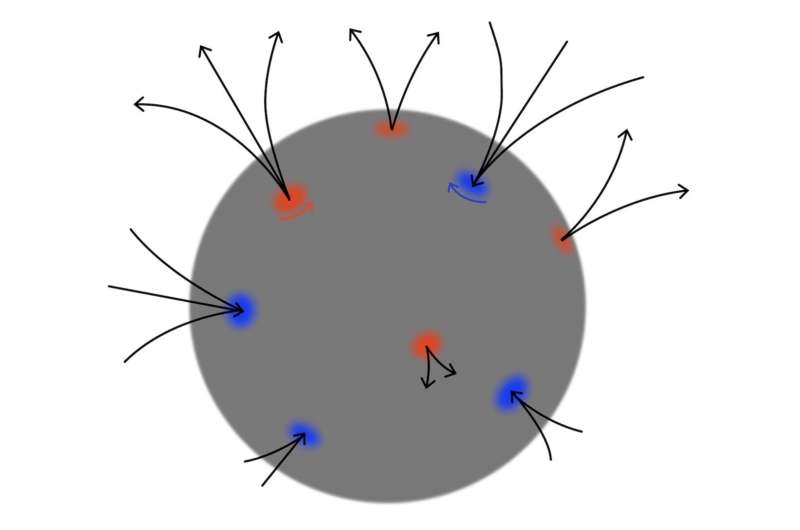Theoretical physicists argue that black holes admit vortex structures

Black holes are astronomical objects with extremely strong gravitational pulls from which not even light can escape. While the idea of bodies that would trap light has been around since the 18th century, the first direct observation of black holes took place in 2015
Since then, physicists have conducted countless theoretical and experimental studies aimed at better understanding these fascinating cosmological objects. This had led to many discoveries and theories about the unique characteristics, properties, and dynamics of black holes.
Researchers at Ludwig-Maximilians-Universität and Max-Planck-Institut für Physik have recently carried out a theoretical study exploring the possible existence of vortices in black holes. Their paper, published in Physical Review Letters, shows that black holes should theoretically be able to admit vortex structures.
"Recently, a new quantum framework for black holes, namely in terms of Bose-Einstein condensates of gravitons (the quanta of gravity itself), has been introduced," Florian Kühnel, one of the researchers who carried out the study, told Phys.org. "Up until our article was published, rotating black holes have not been thoroughly studied within this framework. However, they might not only exist, but also be the rule rather than the exception."
Kühnel and his colleagues Gia Dvali and Michael Zantedeschi performed several calculations based on existing physics theories, particularly the recently devised quantum model of black holes based on Bose-Einstein graviton condensates. The key goal of their study was to examine rotating black holes on the quantum level, to determine whether they would actually admit vortex structures.
"Since rotating Bose-Einstein condensates have been subject to intense studies in laboratories, it is known that they admit vortex structure if rotating sufficiently fast," Kühnel said. "We took this as an invitation to look for those structures also in models for rotating black holes—and indeed found them."
Kühnel and his colleagues showed that a black hole with extremal spin can be described as a graviton condensate with vorticity. This is aligned with previous studies suggesting that extremal black holes are stable against the so-called Hawking evaporation (i.e., a black body radiation that is believed to be released outside of a black hole's outermost surface, or event horizon).
In addition, the researchers showed that in the presence of mobile charges, the black hole's overall vortex traps a magnetic flux of the gauge field, which would lead to signature emissions that could be observed experimentally. The team's theoretical predictions could thus open new possibilities for the observation of new types of matter, including millicharged dark matter.
"Vorticity is an entirely new characteristic of black holes, which are on the classical level (i.e., if one closes one's eyes on their quantum structure) fully characterized by three entities: mass, spin and charge," Kühnel said. "This is what we learned from textbooks—until now. We showed that we need to add vorticity."
The team's theorized existence of vortices in black holes offers a possible explanation for the lack of Hawking radiation for maximally-rotating black holes. In the future, this theory could thus pave the way for new experimental observations and theoretical conclusions.
For instance, black hole vortex structures could explain the extremely strong magnetic fields emerging from active galactic nuclei in our universe. In addition, they could potentially be at the root of almost all known galactic magnetic fields.
"We have just recently established the field of black hole vorticity," Kühnel added. "There is a wealth of important and exciting questions to address, including concerning those applications mentioned above. Furthermore, future gravitational-wave observations of merging black holes, each containing a vortex (of multiple of those), might open the door to these new and exciting quantum aspects of space-time."Black holes gain new powers when they spin fast enough
More information: Gia Dvali et al, Vortices in Black Holes, Physical Review Letters (2022). DOI: 10.1103/PhysRevLett.129.061302
Journal information: Physical Review Letters
© 2022 Science X Network
A theoretical study is one that does not depend upon an experiment, manipulation of variables or empirical evidence. It is based on testing, exploring or developing theories, and it generally involves observation or the compilation of information.
No comments:
Post a Comment